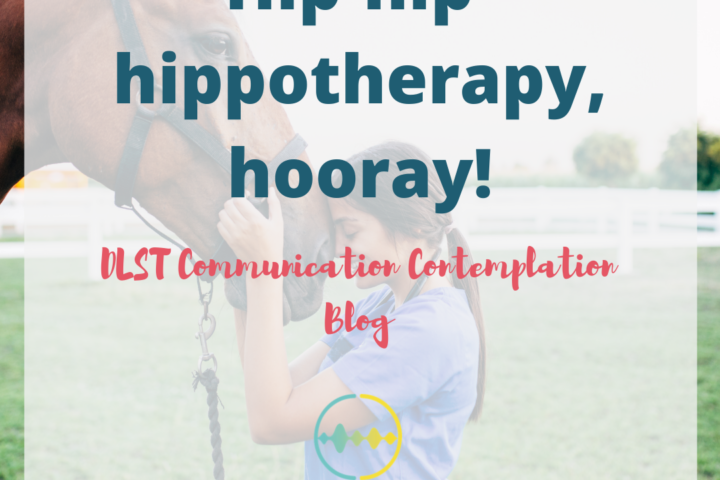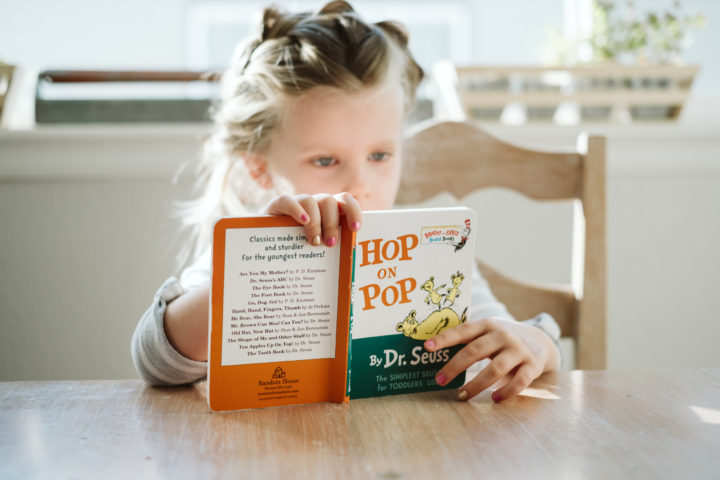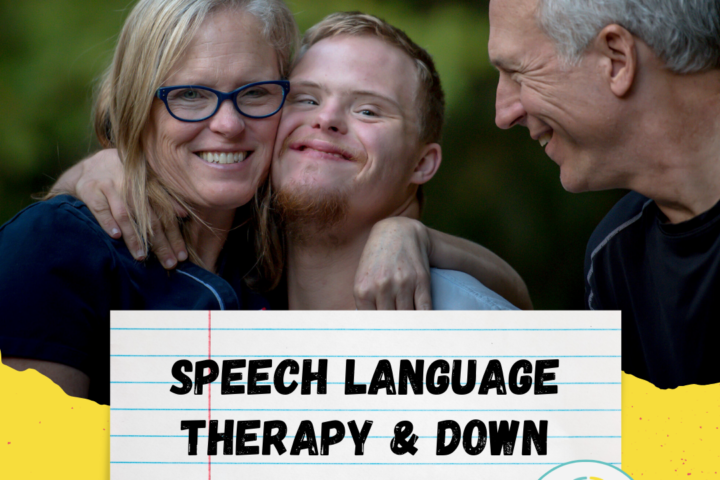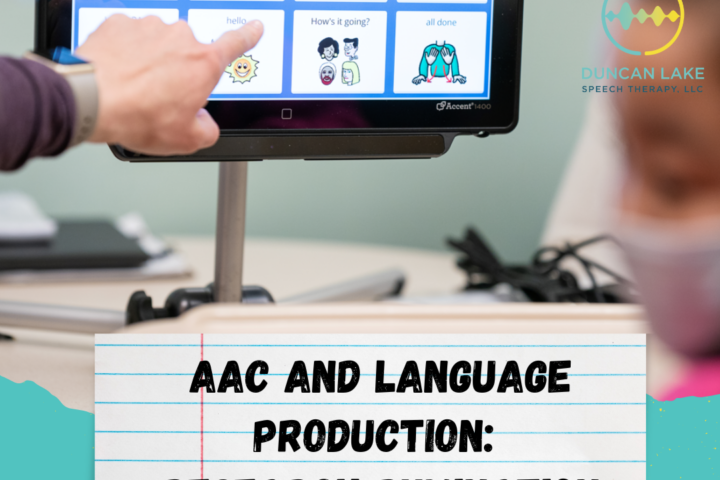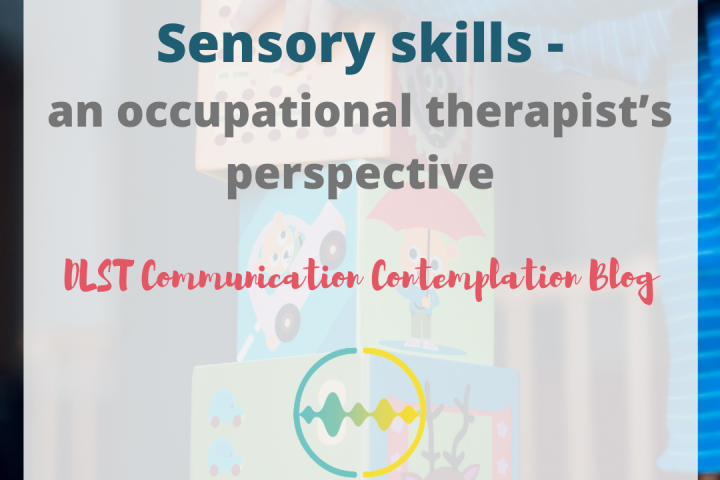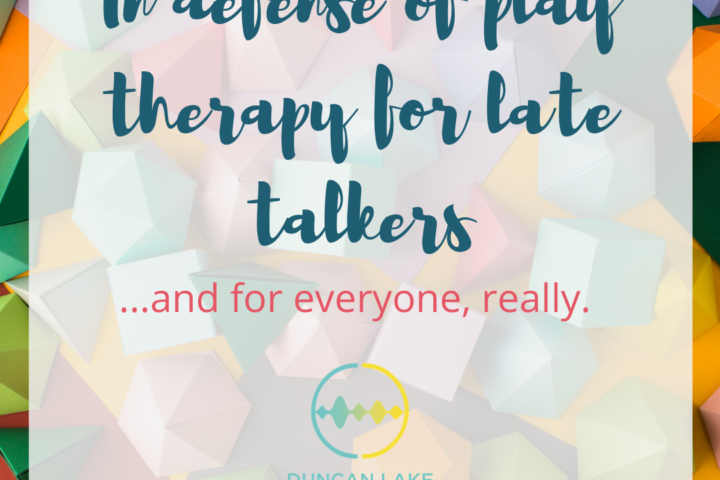Thanksgiving brings with it a lot of time for family togetherness, food, and of course, opportunities of learning language! Looking for ways to incorporate some language-enriching activities into your holiday? Look no further!
Tag: slp
Hip-hip-hippotherapy, hooray!
One form of animal-assisted therapy that is often cited is hippotherapy. Hippotherapy involves speech, occupational, physical, or behavioral therapy that is based on the movements of a horse (hippo is the Greek word for horse). Hippotherapy isn’t centered on the horse itself, but rather the movement of the horse’s gait. The idea behind the therapy is that by manipulating the horse’s movement, the recipient of the therapy activates their neurological, cognitive, sensory, and motor cortices.
Ear infections and language development: Research Rumination
Raise your hand if you had ear infections when you were little! How many of you had tubes in your ears when you were a kid (or, in the case of one of my recent co-workers, AN ADULT)? Ear infections, or otitis media (OM), are super common. 5 out of 6 kids get one by the time they’re 3. Sometimes, kiddos get them a lot. Like…a lot, a lot.
What is the impact of recurrent ear infections on language development? Well, we’ve got a Research Rumination coming in hot from Australia this week that’s going to tell us all about this. Winskel (2006) wanted to investigate specific language skills and how early, recurrent OM impacted these skills later in childhood in this study. Let’s go!
Concussions are actually a big deal.
Who remembers this scene from what may arguably be one of the best teen movies of the late 90s? Julia Stiles (Kat) slams her head on a light fixture at a party and sustains what Heath Ledger (Patrick) determines is a concussion. Humor ensues.
This is a pretty common portrayal of concussions. While some of it might be true (funny things people say, etc.), what is not discussed nearly enough is the fact that concussions are actually BRAIN INJURIES. REAL BRAIN INJURIES.
Speech-language therapy and Down Syndrome
Happy Down Syndrome Awareness Month!
To honor this month, let’s talk about the language profile of individuals with Down syndrome. While I’m going to speak about language characteristics of people with Down Syndrome, it is important to note that no two people are every alike when it comes to speech and language development. Someone once told me, “If you’ve met one person with Down syndrome, you’ve met one person with Down syndrome,” which is completely powerful and true.
SLPs can support people with Down syndrome in many ways and in many areas. Let’s go!
AAC and Language Production: Research Rumination
When it comes to AAC, many, MANY myths exist (as we found out this week on the Facebook page). By far, the one I hear the most often is that AAC will become a crutch and the person using the AAC system will become reliant on the system and not talk.
This week, I read an article titled “Communication interventions for minimally verbal children with Autism: Sequential multiple assignment randomized trial” by Kasari, Kaiser, Goods, Nietfeld, Mathy, Landa, Murphy, & Almirall (2014). This team decided to investigate what, if any, affect AAC had on a non-verbal kiddo’s language production.
Let’s break it down!
The role of SLPs in ALS care
Given the quick progression of the disease, SLP support needs to happen and it needs to happen immediately. Most people aren’t aware of the role that SLPs play in the care for individuals with ALS, but like with those with other degenerative diseases (like dementia), SLPs can be a huge part of the care team. How so? Let’s talk about it in (very) brief.
Sensory skills – an occupational therapist’s perspective
I mentioned briefly on the Facebook page this week that sensory skills are extremely important, especially when it comes to language development. Our occupational therapist friends are the true experts in this area, so for this week’s blog entry, I brought in a PRO! Friends, we’re so lucky to have Brooke Camp, occupational therapist (OT)...
In defense of play therapy for late talkers (and for everyone, really)
When it comes to our younger kiddos (and often older ones, too), sitting at a table and skill-drilling them isn’t perhaps the best or most realistic idea. For our late talkers, speech-language therapy is almost always play-based. From the outside, play-based therapy literally looks like the speech-language pathologist just playing with the child. This often times shocks parents- how can you be making any therapeutic gains with a late talker if you’re not “doing” therapy!?
Rest easy, friends. Play lends itself extremely well to therapy for our littlest clients, and is the much-preferred model of therapy for this age for a number of reasons.
A hearing epiphany
If hand dryers and DJs are that loud, what else in our everyday lives are really loud? And how long can we be exposed to these sounds before our hearing is impacted?


